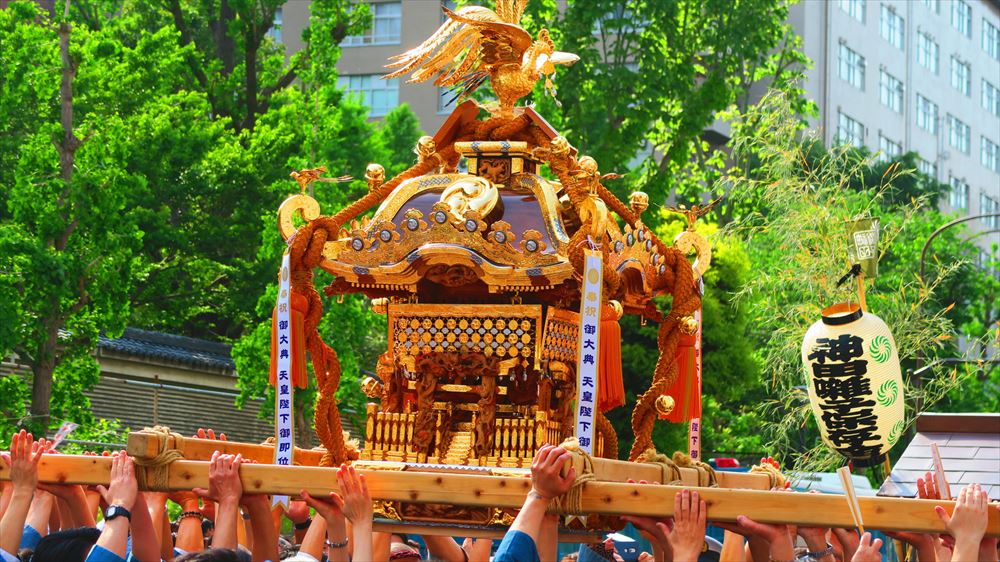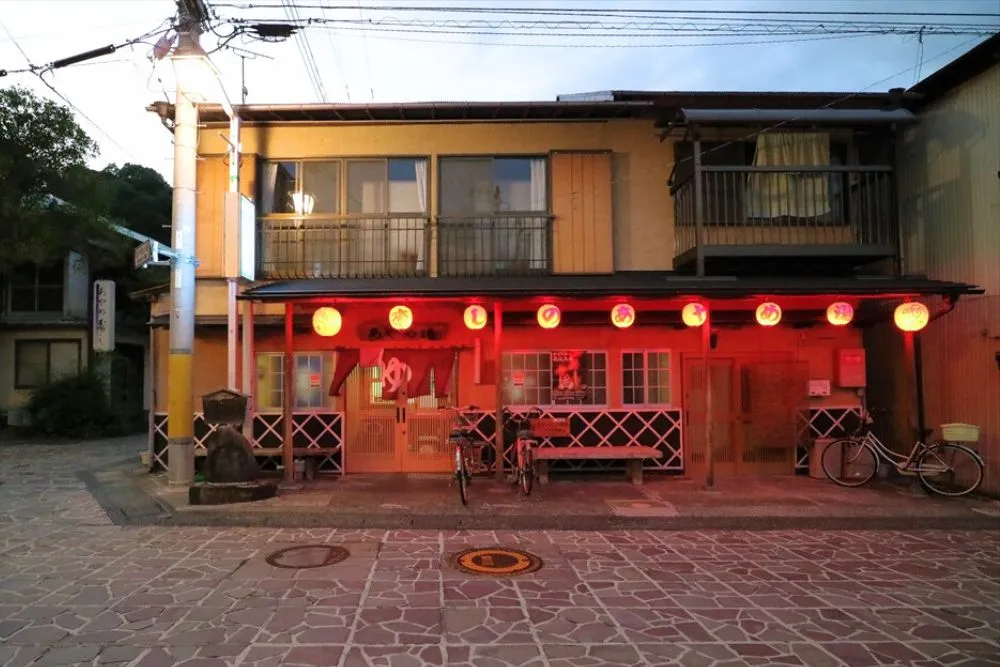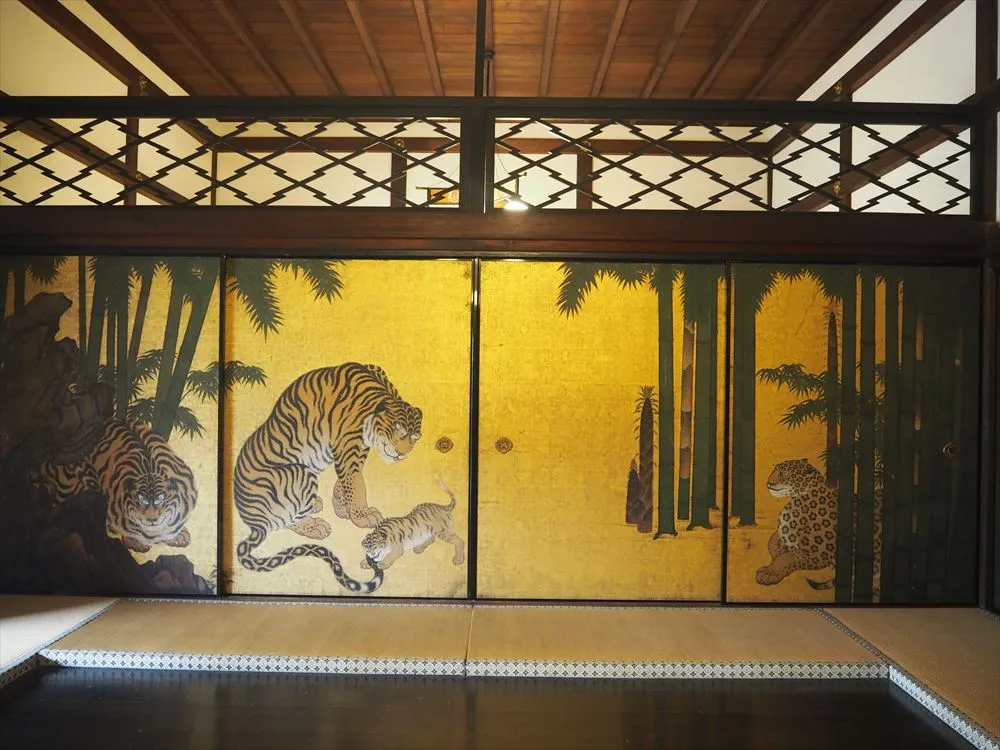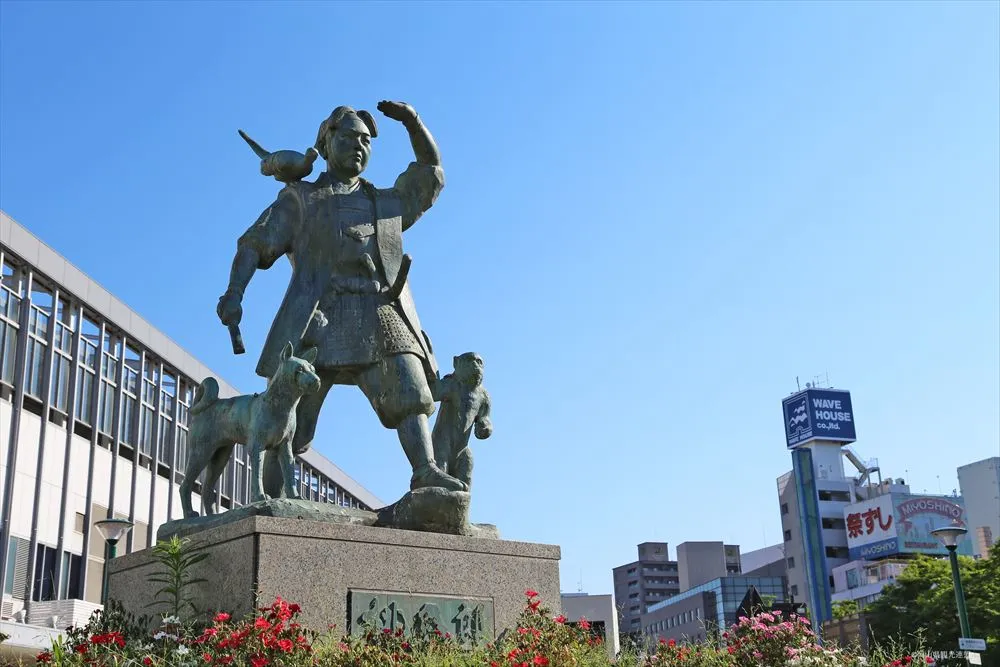
YOTSUYA / KOJIMACHI
YOTSUYA / KOJIMACHI
Kojimachi and Bancho – an old samurai residential area
The Kojimachi and Bancho areas stretch from Hanzomon Station to the east of the Kokyo (Imperial Palace), towards Shinjuku. The area was formerly used as a residential area for Edo Period samurai but in the early 21st century the area is significantly different to that found here in earlier times. The Kokuritsu Gekijo (National Theatre of Japan), Japan’s only classical art theater stands near Hanzomon Station today. The building was designed to imitate the Azekura-zukuri (Azekura style) of Todaiji Temple near Nara and its splendid atmosphere embodies the beauty of Japanese tradition. Offering Kabuki in the ‘Large Theater,’ Hogaku (traditional Japanese music), Gagaku, and Bunraku (a form of Japanese puppet show) in the ‘Small Theater,’ and Rakugo (a traditional Japanese sit-down comedy), Manzai (a Japanese stand-up comedy), and Kodan (storytelling) in the Engeijo (Engei Hall), it has something for everyone. In addition, tours can be taken of its exhibition room: THE best place to know about Japanese traditional performing arts.
Chidorigafuchi, located to the north of Hanzomon Station, is well known as being a famous cherry blossom viewing area. Each spring it attracts many people who come to enjoy the view. Being free from the city bustle, you’ll almost forget that you’re in the center of Tokyo. Relax, enjoy the boating, and savor the views.
The British Embassy and buildings of other nations’ embassies stand each side of Uchibori-Dori. This area is called ‘Bancho.’ Its name originates from the fact that ‘Bankata’ soldiers used to live here. (‘Bankata’ soldiers consisted of Hatamoto who served under the direct control of the ruling Shogun.) During the Edo Period, the huge residences of Hatamoto officers used to stand in rows in the Bancho and Kojimachi areas.
After the Meiji Restoration, politicians and persons of culture moved in to become residents of the area and it developed into a rather high-class residential area in its day. Even today’s Bancho and Kojimachi areas are well known for their many large mansions; a long way from its founding as a residential area for Edo Era samurai.
On a slightly more modern vein, the Nippon Camera Museum (JCII Camera Museum) is also near Hanzomon Station. Visit the museum to see the exhibitions of precious and old cameras. For those into modern art, a visit to the Yamatane Museum of Art in Sanbancho is also recommended as it offers about 1800 modern and contemporary Japanese paintings.

An outer moat town with a dramatic history
Heading west along Shinjuku-Dori will find you close to Yotsuya. St. Ignatius Church with its cylindrical cathedral is a main landmark in the Yotsuya area of Tokyo and it is adjacent to Sophia University. This area was the residential area of the Owari, Kii and Ii families during the Edo Period. (Owari and Kii were two of the principal three branches of the Tokugawa family; Ii being the lord of Hikone clan in the current Shiga Prefecture) The Owari family residence has long since been changed into the Sophia University campus, the Kii family residence into the Akasaka Prince Hotel and the Ii family residence is now the Hotel New Otani with its Japanese garden of 40,000 square meters, historical garden lantern and trees aged in excess of 300-years. The garden’s plants match each of the four seasons to help relax visitors. Enjoy walking in the garden or taking a break on its garden terrace.
Sotobori, or the outer moat of the former Edo Castle from Yotsuya to Iidabashi is also a wonderful cherry blossom viewing spot and is no less beautiful than Chidorigafuchi. The beautiful scenery from train windows on the Tokyo Metro Marunouchi line or JR Chuo Line will surely bring a smile to your face.
From Yotsuya Station, aiming to the south along Sotobori-Dori, you’ll see Geihin-kan Akasaka Rikyuu (the Akasaka State Guest House). The current building was completed in 1909 and in 1974 was reconstructed for use as accommodation for state guests. Its facade is designed imitating Buckingham Palace while the interior is designed in identical form to the palace at Versailles. The decorations, such as a ceiling fresco and a large chandelier are most gorgeous. All is the work of first class artists and craftsman meaning that the former residential area of the feudal era Kii Tokugawa family proudly lives on in the shape of a gorgeous western-style palace.
Yotsuya – a modern area combining historic sites and period stores
Yotsuya has developed in sync with Koshu Kaido (Koshu Highway). The southern part of Shinjuku-Dori, which covers Wakaba-cho, Suga-cho, and Samon-cho, is called Tera-machi (Temple town). As the name indicates there are still many temples around although it is mainly a residential area of slopes and alleys mere meters away from a noisy thoroughfare.
Walking around this area, you often come across quaint old shops. ‘Wakaba,’ a famous taiyaki shop being a prime example. (Taiyaki is a Japanese pancake filled with red bean paste and shaped like a fish) People wait in line to buy these delicious blendings of crispy crust and moderately sweet red bean paste. Another traditional shop is ‘Morihachi’ originally from Kanazawa Prefecture on the Sea of Japan coast. Their ‘Chousei-den’ is one of the most famous forms of confectionery in Japan.
Araki-cho area is located to the north of Shinjuku-Dori toward Yotsuya-sanchome. It used be the huge residential site of Matsudaira Settsu-no-Kami, the lord of the Mino-Takasu Clan. (Mino is currently situated in the southern part of Gifu Prefecture.) During the Meiji Restoration, his residences and Japanese gardens were disposed of by the government, and have since been used as a beautiful area of relaxation and calm for the common people. From the Taisho Period to the middle of the Showa Period, Araki-cho became one of Tokyo’s famous entertainment districts known as ‘sangyo’ towns, and, still now, retains the atmosphere of yesteryear. (Sangyo means three businesses: ryoriya – a restaurant, machiai – a teahouse where geisha entertain guests, and geisha-ya – an establishment that dispatches geisha.) The winding slopes and alleys making up this area look like a labyrinth and ponds and shrines add a mysterious tone. With both history and a wealth of fashionable and unique restaurants to visit you will surely find a place just right for your own tastes.
Walking around Kojimachi and Yotsuya, you will often feel the mood of the old Edo Period. The coexistence of modern buildings alongside their older counterparts. Fashionable shops in a quiet residential area sat amidst historical monuments being an example. It is a fun area to walk around and to browse through shops that catch your eye. Or, for the more historically inclined, it is another interesting area of the capital in which to tour historical sites and to glimpse Japanese history.







